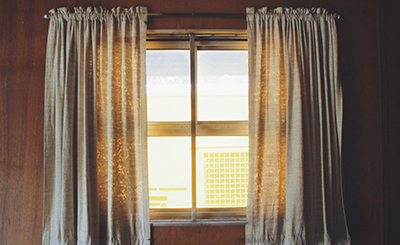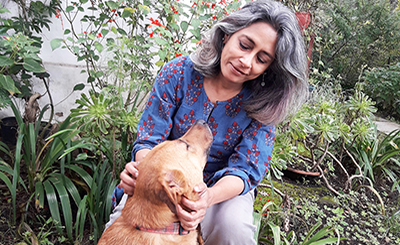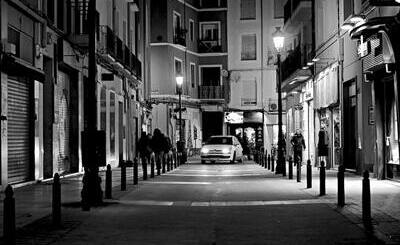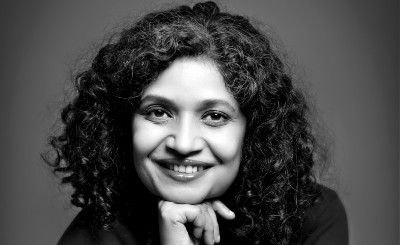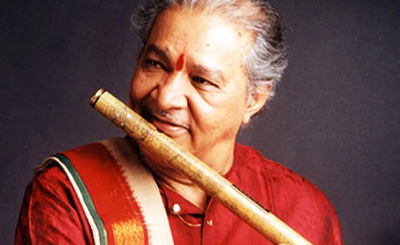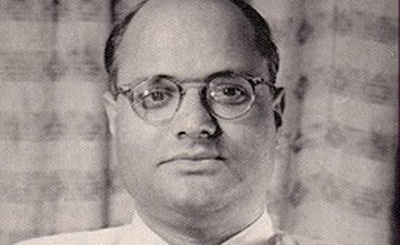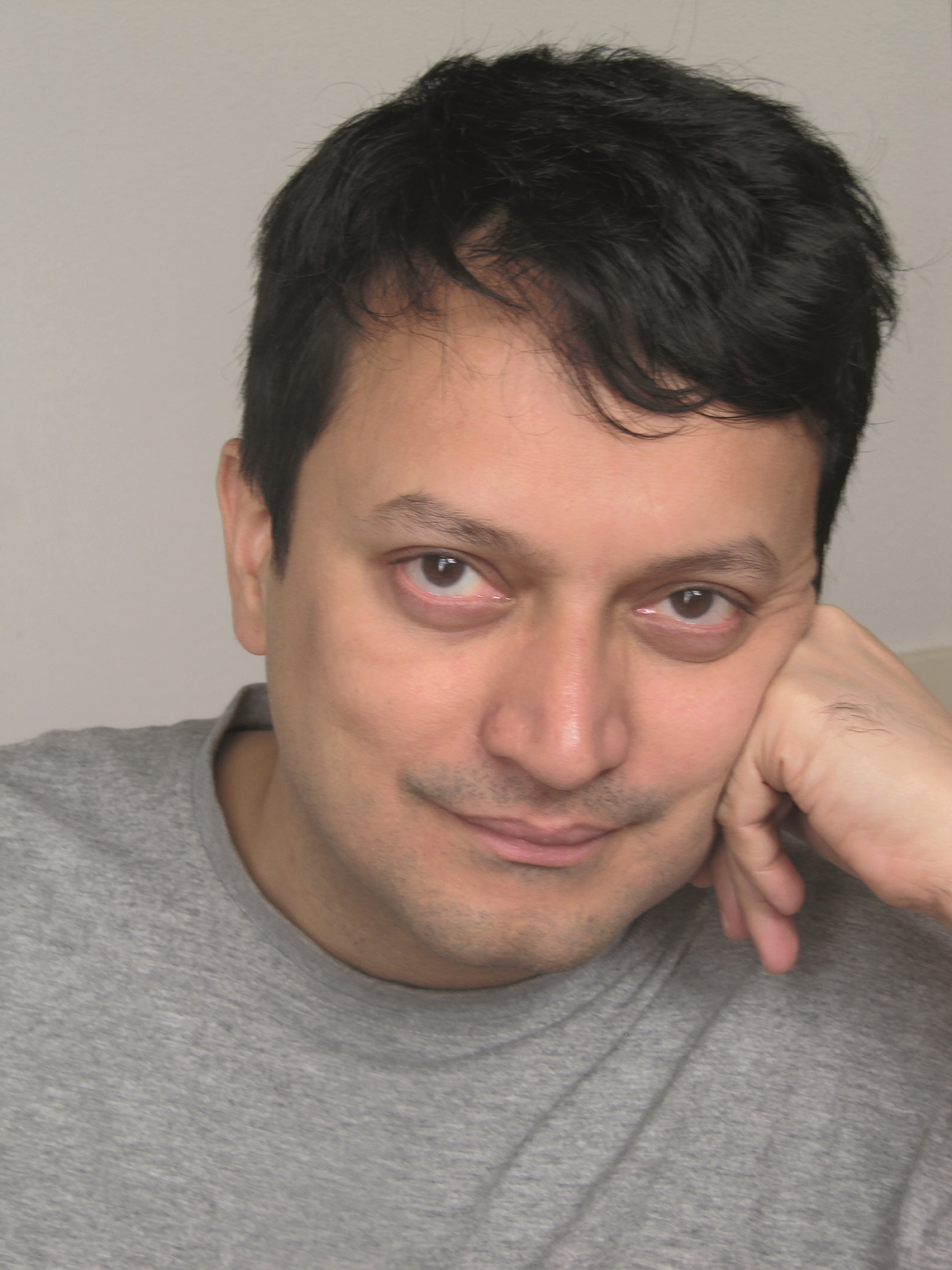
Ranjit Hoskote. Photo by Nancy Adajania-Utrecht
Poet, cultural theorist and curator Ranjit Hoskote’s latest collection of poems, Jonahwhale, is a meditation on water
Poet, cultural theorist and curator Ranjit Hoskote’s latest collection of poems, Jonahwhale, published by Hamish Hamilton, is a meditation on water, moving from the ocean to the river Ganga to Marine Drive waterfront in Bombay (now Mumbai). It invokes the narratives of Biblical prophet Jonah, who escapes death by spending three nights in the belly of a whale, and Herman Melville’s Moby Dick, whose obsessive Captain Ahab chases the eponymous whale who bit off his leg. The poems in the collection resurrect the diverse figures who ran ships along the global trade routes of the seventeenth, eighteenth and nineteenth centuries. Retrieving fragments and episodes from the multiple pasts that we inherit, Jonahwhale inquires into the unregarded legacies of the colonial encounter at sea rather than on land.
Hoskote’s previous collections of poetry include Central Time (Penguin Books, 2014, Vanishing Acts: New & Selected Poems 1985-2005 (Penguin Books, 2006) and Die Ankunft der Vogel (Carl Hanser Verlag, 2006). His other books include eighteen works of cultural criticism. He is also the editor of Dom Moraes: Selected Poems. His translations include I, Lalla: The Poems of Lal Ded.
In this interview, Hoskote talks about his relationship with water. Hoskote, who has spent most of his life in Bombay, which was, once, a group of seven islands, Hoskote looks at archipelago — the garland of islands — as a very “robust model for culture”. He says, “Like Glissant, like René Char, I warm to the archipelago as a set of in(ter)dependent entities, defined by their shifting interrelationships rather than by any essential and unchanging character.”
In Jonahwhale, one of his projects, says Hoskote, “was to explode and open up my own language — to expand the possibilities of my Anglophone poetry to include other languages, and to open my poems up to the possibilities held out by music, by the bandish, by the thumri and the kajri.” He adds, “So my voyage, in this book, is also a voyage through several art forms.” Excerpts from the interview:
The Punch: Jonahwhale, your latest collection of poems, has a central aquatic theme, and draws from the stories of Jonah, the Biblical prophet who spends three days in the belly of a giant fish, as well as Herman Melville’s Moby Dick, in which the obsessive Captain Ahab chases the eponymous whale that bit off his leg. It is wonderful to see the confluence of several variegated streams and influences in the collection that both inform and enrich it. You have termed the collection as an “extended hymn" to water that sustains us and see it as an attempt to “retrieve the unacknowledged narratives of the ocean”. Tell us about your relationship with water, ocean, sea, marines or islands?
Ranjit Hoskote: The Arabian Sea, and by extension the Indian Ocean, has been part of my experience and consciousness all my life. I was born on its shores, in Bombay, and grew up there and in Goa, and have lived most of my life in Bombay — with the vast, percussive, mutable presence of water as a constant. Several times a week, when I travel from my home in Khar to South Bombay, I cross the sea by way of the Sea Link, looking across the expanse of waves at the city.
When you stand at the ocean’s edge, you hear stories that are different than the ones you hear in the landlocked heart of a country or a continent. You hear stories of travel, discovery, the exchange of ideas, the circulation of goods, and the journeying of people shuttling between the familiar and the strange, with few territorial borders to constrain them. It is also an archive of violent histories that continue to inform our present — colonialism, empire, slavery, indenture, the cotton, sugar and opium trades. The ocean is a place of shifting margins, of fluid contact zones, and unboundedness rather than boundaries.
It is also the stage for the encounter between humankind and the elements in the most dramatic and unpredictable manner. And, in our Anthropocene epoch, when human interference in the natural world has begun to exact catastrophic costs, once again it is the ocean that records these costs in the most dramatic way — through the melting polar ice, rising sea levels, swirling continents of plastic, the end and mutation of species and ecosystems.
Also, it’s formative that I’ve spent most of my life on an island — Bombay. Which was, once, a group of seven islands. To me, the archipelago — the garland of islands — is a very robust model for culture. Like Glissant, like René Char, I warm to the archipelago as a set of in(ter)dependent entities, defined by their shifting interrelationships rather than by any essential and unchanging character.
The Punch: Jonahwhale stands apart for its experimentation with form. You resort to various forms and embrace diverse languages, including Awadhi, Braj bhasha, Konkani and Greek. In the collection, the ocean, the sea, beaches like Marine Drive, the Ganga have all been depicted as malleable, multitudinous and shape-shifting entities, changing the spectrum of themes and meanings they are meant to convey. What riches do voyages hold out for the sailor? How have voyages changed the contours of history and language across civilisations? How crucial is the experience of a voyage to this collection?
Ranjit Hoskote: The ocean is where languages melt, meld, are reshaped. Pidgins, creoles, argots — new languages emerge from the coming together of individuals speaking different tongues. The lascar or jahaazi, the dubash or double-tongued one, the dragoman — these figures bridge the gaps between languages and cultures in the history of the ocean, especially between the 16th and 19th centuries. The sailor may dream of riches, but he is also at risk. His life is on the hazard. In Jonahwhale, one of my projects was to explode and open up my own language — to expand the possibilities of my Anglophone poetry to include other languages, and to open my poems up to the possibilities held out by music, by the bandhish, by the thumri and the kajri. So my voyage, in this book, is also a voyage through several art forms.
The Punch: Your poems in the collection, both the short and intricately structured long ones, resurrect and pay homage to the diverse figures, the lascars (Glissant or jahaazi) who ran ships along the global trade routes of the 17th, 18th and 19th centuries. Did you also conceive this collection as a reflection on history, geography and politics of the region? Did you also set out to meditate on the ecological and political crisis (a city at war with itself) staring at us? Did you want this collection to reflect on how we perceive history, water and in the world around us?
Ranjit Hoskote: One of my favourite books is Ananda Coomaraswamy’s 1928 collection of writings, Yakshas: Essays in the Water Cosmology. In these essays, the great scholar and questor traces the connection between water and the sacred, the intimate link between sources of water and the guardian figures of cults of fertility and abundance. I felt the power of going down into the earth, to the source of water, when I visited the Rani-ki-vav, the Queen’s Stepwell, in Patan, in March 2014 — to go down through elaborately sculptured terraces and stairways to where the water sparkles, a guarantee of the cycles of regeneration. At a moment when the planet and its generative processes are at risk, we, too, must be guardians of the deep sources.
The Punch: Ruth Padel has aptly described the collection as “a symphony of the sea in three great movements”. While the first section explores the history, language and geography, the second focuses on the human traffic, with the attendant urban alienation, and the third section concentrates on art. Tell us about the underlying concerns behind its delicate structure, which also acknowledges our collective inheritance and “mixed legacies” the multiplicities that make up and define each of us. As a poet and cultural theorist, how do you view this cultural confluence?
Ranjit Hoskote: I believe that confluence is central to our cultural experience, that all cultures are nourished and sustained by hybridity. There are no pure essences, no authentic and original sources. The most extraordinary civilisations are precisely those that opened themselves up to polyglot, multi-ethnic, multi-religious diversity — among them, Achaemenian Iran, Kushan India, the Mediterranean of the Arabised Normans, al-Andalus, Mughal India, and the Ottoman Empire.
While the presence of water is close at hand in all the three movements of Jonahwhale, each movement engages with a somewhat different set of questions and experiences. The first movement, ‘Memoirs of the Jonahwhale’, resonates with the question of how to render the transhistorical and transcontinental annunciations of the ocean in ways that register a multiplicity of speaking selves. I do not believe that we can any longer be sovereign, self-insulated individuals today. Rather, we are ‘dividuals’ — each of us is an assemblage of selves and interests, and we include subjectivities other than our own, including those whose destinies we unknowingly share. Some of the poems in this section are structured, quite deliberately, as librettos — scores for an opera, with many voices, some speaking in recitative, others calibrated as arias.
The second movement, ‘Poona Traffic Shots’, moves inland yet continues to function as a river of images and moments, a project in assembling an orchestral self from a chorus of fragments. The third movement, ‘Archipelago’, meditates on the making of art as a series of linked islands, while using incantation and memoir, invoking found material, lists, transmuting prose into poetic cadence.
The Punch: From the colonial encounter at sea to Marine Drive, in these poems we witness a poet who is attuned to the “poethics of listening”, a poet aware of the sounds of words, “generous and open to the world”. Tell us how does this sensory awareness inform this collection and your craft?
Ranjit Hoskote: It is my friend and colleague, the marvellous poet James Byrne, who has talked about the “poethics of listening” in my work. I believe that the act of listening can be transformative, if one releases oneself to the world’s voices, to the voice of the Other, the voice of the unknown interlocutor, the stranger, the revenant claiming attention, the erased and repressed. Jonahwhale, to me, is a project in transformative listening — whether to such a vanished lingua franca as Lashkari, the language of the seamen, Konkani, Malay, Arab, Gujarati, who ran ships across the 17th and 18th centuries; or to the voices of the great women exponents of Hindustani classical music who sang thumris, tappas and chaitis redolent with the passion of loss and also the memory of a juridical violence and economic oppression that could tear communities apart, drag individuals away to labour in the cities, or on faraway plantations across the seas.
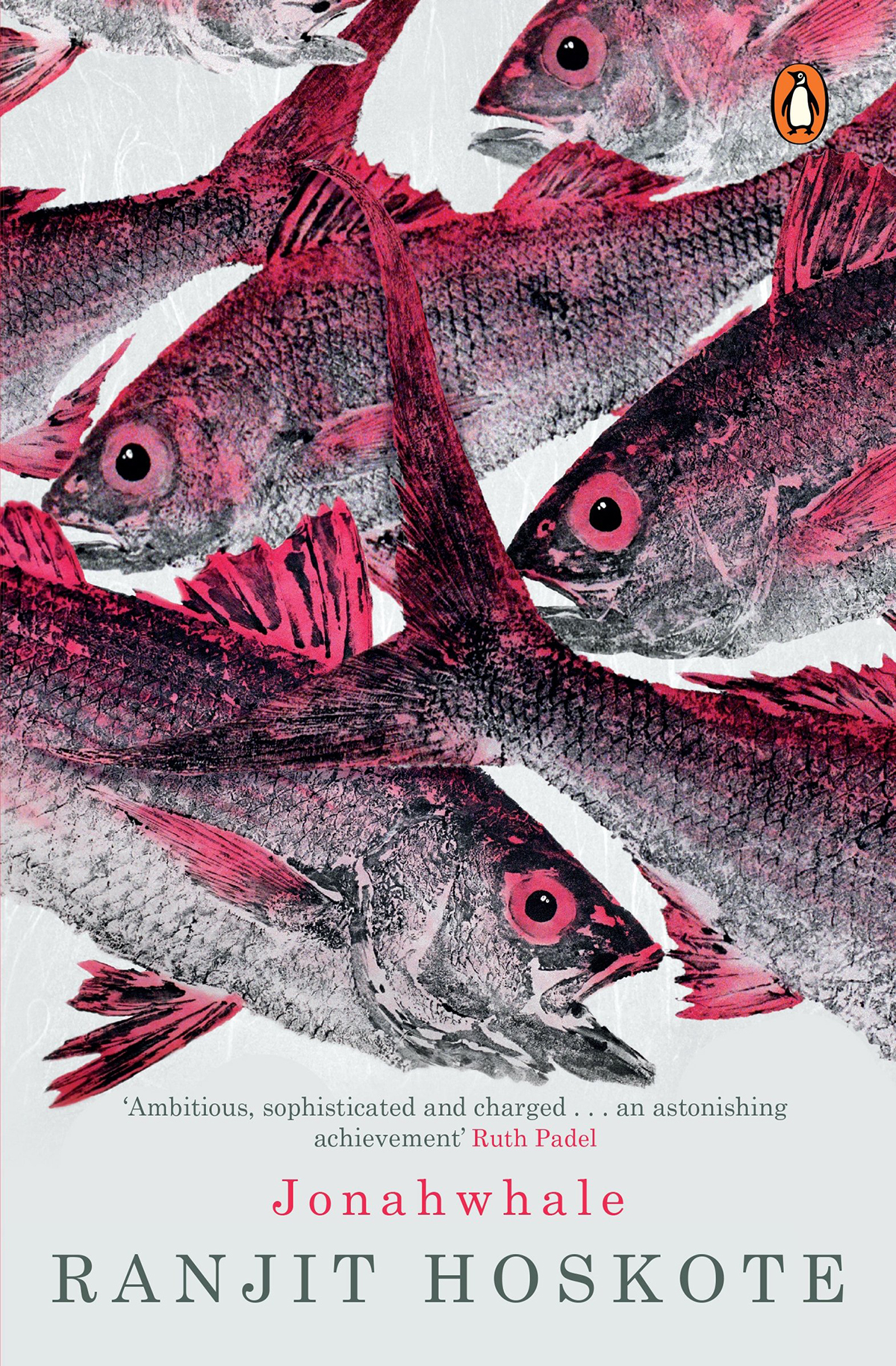
The Punch: Like Jonah of the first part of the collection’s name has a context, the second part, the whale, is equally fascinating. How would you describe the significance of the title of this collection?
Ranjit Hoskote: Jonahwhale fuses the reluctant, runaway prophet who wishes to escape what God has in mind for him, and the whale that swallows him up, seemingly annihilating yet protecting and redeeming him. In another reading, Jonah is the survivor, living by his wits, going from one error to the next, and the whale is the atlas within which he navigates his journey. The jahaazi and the Empire, the artist and the institutions of the art world, the poet and the lifeworld in which s/he writes — you cannot separate the individual and the system. Each informs, responds to and pushes up against, the other — you are your ecosystem in microcosm, your ecosystem is the macrocosmic sum of your affordances and missteps, and there is no getting away from the permanent urgency by resorting to excuses of scale. Jonahwhale describes this condition.
The Punch: Tell us about your creative process. How do you write? Where do you seek your inspirations from? When do you know that you are done with a poem? Do you fret over form and structure?
Ranjit Hoskote: I write through a process of collecting and building up notations and fragments, sometimes stray images, sometimes a stanza or strophe, sometimes a refrain line. Some few times, a poem announces itself in near-complete form. ‘Poona Traffic Shots’, the long ten-part poem that forms the second movement of Jonahwhale, came to me almost entirely over several days of intense focus, in the monsoon of 1991 — and, as I often do with my poems, I left it in a folder until it seemed ready to present to my readers, nearly 30 years after it was written. I tend to tinker away at my poems and revise them, until I feel I’ve got them to a pitch and measure that rings well for me. Form and structure are crucial to the process. Will the poem gather itself into a precise set of cadenced propositions? Should it explode across the page in a scatter pattern? Will it emerge as a spiky diagram? Will it course like a river from source to mouth? These are vital decisions, these choices of the shape and tonality of the poem.
The Punch: Your craft reflects a very hybrid influence — with visible strands of influences from a mix of art practices — writing, curating, editing, art-making, listening, and other forms of cultural production. In what ways do these practices inform your poetry? Tell us how poetry to you becomes a celebration of “the lived cadence”.
Ranjit Hoskote: My various practices tend to overflow the boundaries of their disciplinal and institutional contexts, and I view this as a productive and fruitful circumstance. For years, I tried to keep my various lives separate — as poet; as commentator on cultural politics; as art critic, cultural theorist, and curator. In recent years, I’ve allowed for — well — a confluence of these streams. This came to me forcefully, some years ago, when I realised that, while my intellectual and affective investments as an art critic lay in the experimentalism of the early-20th-century and post-World War II avant-gardes — the Dadaists, the Surrealists, the Constructivists, Fluxus, Arte Povera — my own poetry had tended towards the classicising voice and phrase. Also, I began to think about bringing into my poetry my unabashed enthusiasm for the hand-painted film experiments of Stan Brakhage, the trans-media high-spiritedness of Bruce Conner, the fantastic experimental music of Steve Reich and Terry Riley, Jan Garbarek and Arvo Pärt. In Jonahwhale, the collage, the objet trouvé, the cut-up, looping, antiphony, all come into play as formative and integral devices in the making of poems.
The Punch: You have also translated the works of 14th century Kashmiri mystic poet, Lal Ded. You have followed in the tradition of Bombay poets like Dom Moraes. Tell us about your poetic and cultural influences and how they have changed over the years?
Ranjit Hoskote: The poets who form my artistic genealogy are diverse, yet cogent to me, because I know what I respond to and inherit, and why their example is crucial to my practice. The paradox of robust delicacy here, the ability to draw a line out until it stretches across the page like a taan held to the breaking of breath, the fixing of the ephemeral in memory as the perennial, the gathering of shadows into a brief luminosity, the gravity of playfulness — for all these gifts, and more, I turn to Bhartrihari, Bilhana, Lal Ded, and Ghalib who are extremely important to me. So, too, are Keki Daruwalla and Dom Moraes. And so, too, are Heinrich Heine, Friedrich Hölderlin, Georg Trakl, James Merrill, Adrienne Rich, Jorie Graham, Louise Glück, Agha Shahid Ali, Amy Clampitt, René Char, Yves Bonnefoy, and Charles Simic.
The Punch: Tell us about the process to curate the exhibition called Anti-Memoirs at Serendipity Arts Festival that reflected on the relationship between locale, language and landscape.
Ranjit Hoskote: An exhibition, to me, is an argument or proposition, to be mounted and tested; an assembly of possible outcomes; a laboratory — never just a collection of objects. Anti-Memoirs, which I curated for the Serendipity Arts Festival 2017 in Goa, began with my desire to bring together a set of artistic and archival practices that addressed the connection between locus, language, and landscape — but in a way that emphasised the changeability, the historical shifts, the semantic slippages, that had shaped all those three abiding inheritances. Locus can manifest itself as ritual, season or debate. Language can appear as a measure of silence or music. Landscape can insist on its deep geological or oceanic strangeness, like the tidal sand that pulls away from under our feet.
Memory, in this context, is not reducible to simple memoiristic remembrance or anecdotal recalling. Rather, it is an urgent form of recollection that may be figured as premonition, prognosis or agency. It is an act of looking back to look forward — closely akin to Walter Benjamin’s conception of history, which he sees as a memory to be “seized, as it flashes up at a moment of danger”.
And so I named this exhibition Anti-Memoirs. The title is that of the legendary 1967 book by the writer, soldier, diplomat and politician André Malraux, which traverses his 1965 journey to the East: to Egypt, India, China, and South-east Asia. Of this work, Malraux wrote: “I have called this book Anti-Memoirs because it answers a question which memoirs do not pose and does not answer those which they do.” As the critic Roger Shattuck observes, Anti-Memoirs is not concerned with “events exclusively but with a particular relation between them: privileged moments”. In this spirit, my exhibition was meant to essay a “creative autobiography” of contemporary India, by transverse means, through the work of the contemporary artists Zarina Hashmi, Veer Munshi, Ravi Agarwal, Vishwajyoti Ghosh — as well as the early 20th-century master M V Dhurandhar, the British scholar-gypsy Philip Rawson, and the American stereoscope-manufacturers, Underwood & Underwood.
The Punch: What are the other projects you are currently working on?
Ranjit Hoskote: I have been working on a translation of a selection of Ghalib’s poems from the Urdu since 2006 — sporadically for much of this time, and now in a reasonably focused manner. I must also finish a translation, from the Sanskrit, of the love poets Bhartrihari, Bilhana, and Amaru, which too has been in the works for a number of years. On the curatorial front, I will be working on an exhibition for the Serendipity Arts Festival 2018, as well as a retrospective of the great abstractionist Mehlli Gobhai, which I am co-curating with Nancy Adajania, among other projects.
More from The Byword
Comments
*Comments will be moderated




